🌟 Mr. Lee’s Paver Project Process
- Share Your Vision: Imagine a beautiful outdoor space that complements your lifestyle. Tell us how you’d like your paver project to look and function.
- Assess Your Property: We’ll evaluate your outdoor space to plan the perfect layout and design.
- Choose Materials and Designs: Get expert guidance in selecting materials and features that match your style and needs.
- Make Informed Choices: Understand how each decision impacts the appearance, durability, and cost, ensuring your project aligns with your vision.
- Develop a Custom Plan: Work with us to craft a detailed and tailored project plan that brings your ideas to life.
💬 Request a Quote Today: Share your goals, and let us handle the rest—from planning to execution—so you can enjoy your dream space without the hassle!
Top Paver Projects by Mr. Lee
- Backyard Patio: Transform your backyard with a natural stone patio in a random pattern, sealed with a non-slip coating for added safety. Enhance the ambiance with in-ground lighting for perfect evening gatherings.
- Front Yard Walkway: Create a timeless entrance with a classic herringbone clay paver walkway, bordered by brick edging and filled with polymeric sand to prevent weed growth.
- Garden Pathway: Add charm to your garden with an eco-friendly permeable paver pathway. Featuring moss-filled gaps and natural stone borders, it delivers a rustic, earthy aesthetic.
📋 Lee’s Paver Project Custom Order:
Creating a paver project is an exciting and creative journey, and we’re here to guide you every step of the way. Paver designs are both versatile and impactful, offering endless possibilities to elevate your hardscape.
At Lee’s, we’re committed to personalized service—listening closely to your goals, understanding your vision, and providing expert advice on design, materials, and construction. Together, we’ll craft a space that’s beautiful, functional, and uniquely yours. 🌿
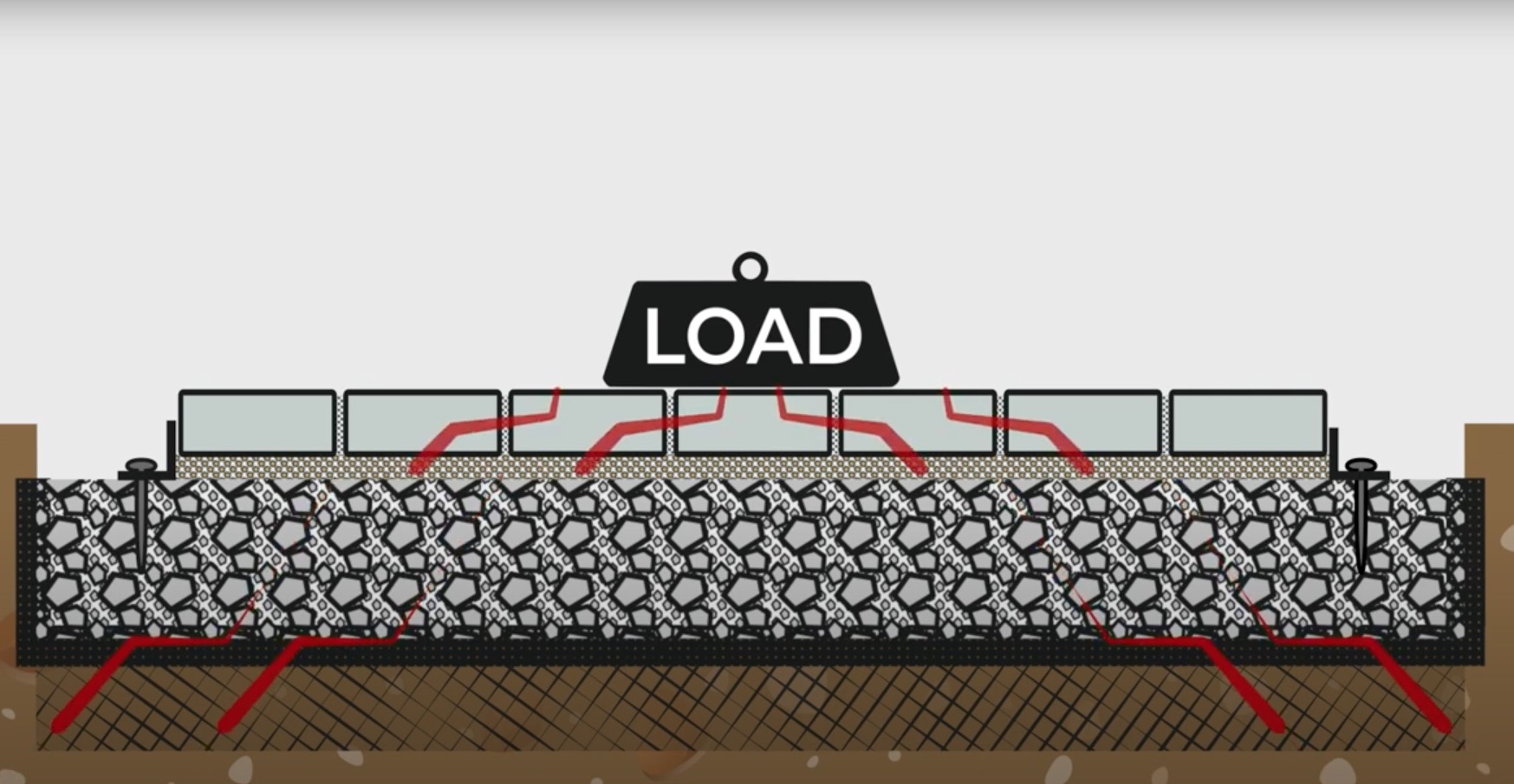
Project Overview
| Features | Options |
|---|---|
| Type of Pavers | Concrete Pavers Clay Pavers (Brick), Natural Stone Pavers, Porcelain Pavers, Rubber or Plastic Pavers |
| Paver Shape and Size | Square Rectangular, Circular/Curved, Random Sizes, Large Format Pavers, Small Format Pavers |
| Paver Color | Neutral Colors, Earth Tones, Cool Tones, Multi-tone Blends, Custom Colors |
| Pattern or Layout Design | Herringbone, Basketweave, Running Bond, Random/Irregular, Circular/Fan Pattern |
| Jointing Material | Polymeric Sand, Regular Sand, Gravel or Pebbles, Grass or Moss |
| Edge Restraint | Concrete Edging, Plastic or Metal Edging, Natural Stone Borders, Brick Edging, No Edging |
| Base Material | Crushed Stone/Gravel, Sand, Compacted Soil |
| Drainage Solutions | Permeable Pavers, Slope Grading, French Drain Installation, Built-in Gutters or Drains |
| Sealer or Finish | No Sealer, Glossy or Matte Sealer, Non-Slip Coating, Stain-Resistant Sealer |
| Lighting Options | In-ground Paver Lights (LED), Pathway, Lights String or Hanging Lights, Spotlights on Plants or Trees |
| Accent Features | Incorporate a fire pit or fireplace Water features (fountains, ponds), Built-in seating, Decorative inlays, Planter boxes or garden borders |
| Budget Consideration | Low budget, Mid-range budget, High-end budget |
| Use and Functionality | Light foot traffic, Heavy foot traffic, Driveway usage, Entertainment space |
| Seasonal Considerations | Snow and ice resistance, Salt resistance, Heat resistance, Freeze-thaw durability |
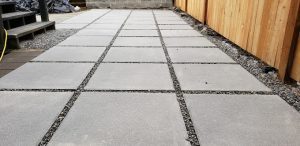
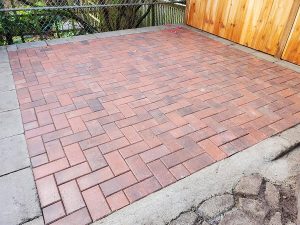
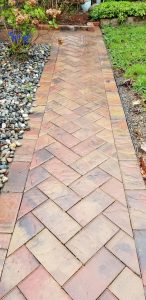
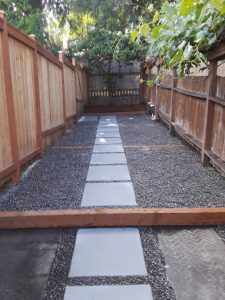
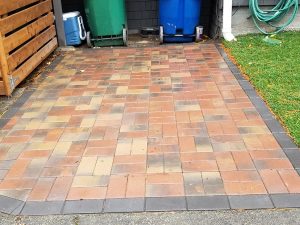
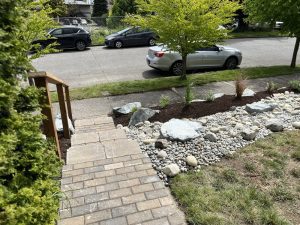
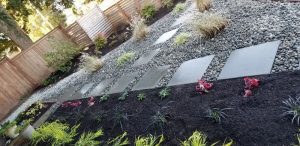
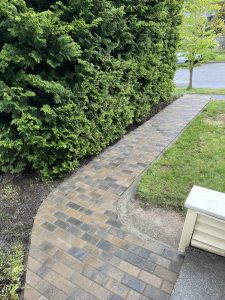
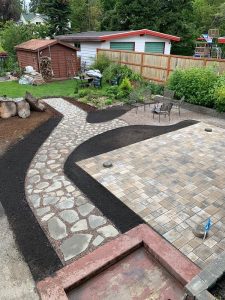
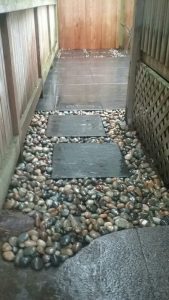
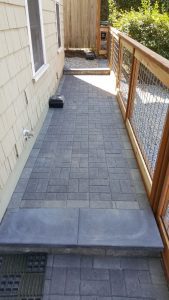
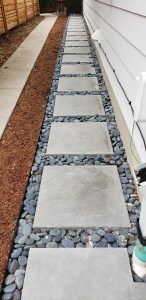
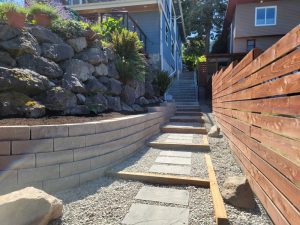
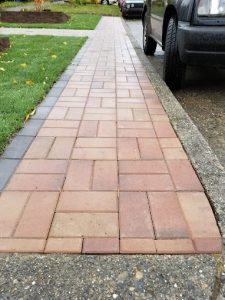
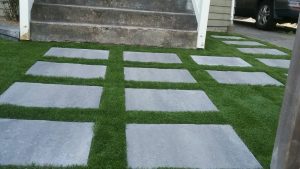


Seattle Paver Project Options
1. Type of Pavers
- Question: What type of pavers would you like to use?
| Paver Type | Description | Features | Common Uses |
|---|---|---|---|
| Concrete Pavers | Pre-cast concrete blocks in various shapes, sizes, and colors. | Durable, cost-effective, and easy to install. | Modern designs due to their versatility. |
| Clay Pavers (Brick) | Traditional brick made from natural clay, usually red or brown. | Timeless, classic look; more durable than concrete in freeze-thaw areas. | Walkways and patios with a classic, weathered look. |
| Natural Stone Pavers | Options include flagstone, bluestone, or limestone. | High-end, organic appearance; unique beauty. | Patios and walkways for an elegant look. |
| Porcelain Pavers | Man-made, kiln-fired ceramic tiles mimicking stone or wood. | High durability; resistant to stains, moisture, and frost. | Sleek, contemporary finishes. |
| Rubber or Plastic Pavers | Eco-friendly options made from recycled materials. | Soft, flexible, lightweight; ideal for cushioning. | Playgrounds or areas where extra cushioning is preferred. |
2. Paver Shape and Size
- Question: What shape and size of pavers do you prefer?
| Shape | Description | Features | Common Uses |
|---|---|---|---|
| Square | Traditional, uniform shape. | Clean, symmetrical look. | Modern and classic designs. |
| Rectangular | Versatile shape that can be arranged in various patterns, like running bond or herringbone. | Ideal for long, straight paths or geometric layouts. | Paths, patios, and structured landscapes. |
| Circular/Curved | Used to create flowing designs, especially around central features. | Gives a natural, organic feel. | Gardens and areas around fire pits or water features. |
| Random Sizes | Mixture of different-sized pavers placed irregularly. | Rustic, natural look. | Stone walkways and casual patio spaces. |
| Large Format Pavers | Pavers larger than 24×24 inches. | Streamlined, open appearance with fewer joints. | Luxury patios, pool decks, and open spaces. |
| Small Format Pavers | Allows for intricate designs and patterns. | Great for detailed layouts. | Walkways, patios, and vintage or old-world designs. |
3. Paver Color
| Color Type | Description | Features | Common Uses |
|---|---|---|---|
| Neutral Colors (Gray, Beige, Tan, Cream) | Common in modern designs and minimalist aesthetics. | Blends well with most exteriors and landscapes. | Modern homes and versatile outdoor spaces. |
| Earth Tones (Brown, Red, Rust, Terracotta) | Warm, natural tones. | Creates an inviting, rustic look. | Rustic or traditional designs. |
| Cool Tones (Blue, Slate, Charcoal) | Provides a modern or industrial aesthetic. | Helps reduce heat in sunny areas. | Contemporary patios and industrial-themed landscapes. |
| Multi-tone Blends | Pavers with two or more blended tones. | Gives depth and texture; mimics natural stone. | Dynamic patios and visually textured walkways. |
| Custom Colors | Special colors tailored to specific designs or branding. | Unique, personalized look. | High-end custom projects and brand-specific designs. |
4. Pattern or Layout Design
- Question: How would you like the pavers to be laid out?
| Pattern Type | Description | Features | Common Uses |
|---|---|---|---|
| Herringbone | A classic V-shaped pattern with pavers laid at 45 or 90 degrees. | Offers excellent stability; ideal for high-traffic areas. | Driveways and paths subject to heavy use. |
| Basketweave | Alternating pairs of horizontal and vertical pavers create a woven effect. | Traditional look; adds texture and complexity. | Historical settings and decorative paths. |
| Running Bond | Pavers laid in staggered rows, similar to brickwork. | Simple and clean; versatile for various applications. | Walkways, patios, and driveways. |
| Random/Irregular | Varied sizes and shapes arranged in a seemingly random pattern. | Creates a natural, organic look. | Cottage gardens and rustic landscapes. |
| Circular/Fan Pattern | Pavers laid in a radial or curved pattern around a focal point. | Enhances visual interest and flow. | Patios and areas with round or oval shapes. |
5. Jointing Material (Grout or Filler)
- Question: What type of joint material would you like between pavers?
- Polymeric Sand:
- A special sand that contains polymers, which hardens when wet.
- Fills in the joints between pavers, preventing weed growth and insect infestation.
- Durable and low maintenance, making it ideal for outdoor spaces.
- Regular Sand:
- Used traditionally between pavers but needs regular upkeep.
- Prone to shifting and may allow weeds to grow over time.
- Gravel or Pebbles:
- Adds a decorative touch by using small stones or pebbles between the pavers.
- Commonly used in natural or rustic settings, requires occasional replenishment.
- Grass or Moss:
- For a more eco-friendly or natural look, you can plant grass or moss between the pavers.
- Requires more maintenance but creates a softer, greener environment.
6. Edge Restraint
- Question: What type of edge restraint will you use to keep pavers in place?
| Edging Type | Description | Features | Common Uses |
|---|---|---|---|
| Concrete Edging | Poured concrete border that stabilizes pavers. | Durable, long-lasting, and low-maintenance. | Driveways and paths requiring solid support. |
| Plastic or Metal Edging | Lightweight and flexible material for easy installation. | Often hidden beneath the surface for a clean look. | Patios and flower beds with neat borders. |
| Natural Stone Borders | Larger stones or rocks used to contain pavers. | Adds a rustic, organic appearance. | Gardens and landscapes seeking a natural aesthetic. |
| Brick Edging | Bricks set either vertically or horizontally around the paver area. | Classic look, often used with brick pavers. | Traditional gardens and pathways. |
| No Edging | Forfeits formal edging for a more organic appearance. | May lead to shifting over time. | Garden or woodland settings for a natural feel. |
7. Base Material
- Question: What base material do you prefer for stability?
- Crushed Stone/Gravel:
- The most common base material for pavers, providing stability and drainage.
- Often paired with a sand layer on top to level the pavers.
- Helps prevent pavers from shifting over time.
- Sand:
- Typically used as a leveling layer, but some simpler projects use sand alone as a base.
- Sand is compacted to create a smooth surface for the pavers to rest on.
- Compacted Soil:
- For very basic or temporary walkways, compacted soil can serve as the base.
- Not ideal for long-term projects as it doesn’t provide as much stability.
8. Drainage Solutions
- Question: How do you plan to handle water drainage?
- Permeable Pavers:
- Pavers designed to allow water to pass through, preventing runoff and reducing flooding.
- Ideal for areas prone to heavy rainfall or where environmental sustainability is a priority.
- Slope Grading:
- Slightly tilting the surface of the pavers to allow water to drain away from buildings or pathways.
- Essential to prevent standing water and maintain the durability of the paver installation.
- French Drain Installation:
- A trench filled with gravel containing a perforated pipe that redirects water away from the patio or walkway.
- Great for areas with poor natural drainage.
- Built-in Gutters or Drains:
- Installing gutters or surface drains directly into the paver area to direct water away.
- Commonly used in larger patio projects or high-traffic areas.
9. Sealer or Finish
- Question: Do you want to apply a sealer or special finish to the pavers?
No Sealer:
- The pavers are left untreated for a natural, weathered look.
- Requires more maintenance and cleaning to avoid stains or moss growth.
Glossy or Matte Sealer:
- Sealer adds a layer of protection, preventing water, stains, and UV damage.
- Glossy sealers enhance the color of the pavers, while matte finishes keep a more natural look.
Non-Slip Coating:
- Special coatings are available to add traction and prevent slips on the pavers.
- Ideal for areas exposed to water, like pool decks or patios.
Stain-Resistant Sealer:
- Prevents oil, grease, and other stains from penetrating the surface.
- Useful in outdoor kitchens or driveways where staining is common.
10. Lighting Options
- Question: Would you like to incorporate any lighting features into your walkway or patio?
- In-ground Paver Lights (LED):
- Small, recessed lights placed directly in the paver surface.
- Adds subtle lighting for walkways or patios, enhancing nighttime safety and ambiance.
- Pathway Lights:
- Small solar or electric lights that line the path.
- Commonly used to illuminate walkways or garden paths.
- String or Hanging Lights:
- Decorative string lights or hanging bulbs for patios to create a warm, inviting atmosphere.
- Often used for outdoor entertaining spaces.
- Spotlights on Plants or Trees:
- Ground lights that highlight surrounding landscaping, such as trees, shrubs, or water features.
- Adds a dramatic touch, especially for garden walkways.
11. Accent Features
- Question: Would you like to add any design accents or features?
- Options:
- Incorporate a fire pit or fireplace
- Water features (fountains, ponds)
- Built-in seating (stone benches or walls)
- Decorative inlays (different color or type of pavers)
- Planter boxes or garden borders
12. Budget Consideration
- Question: What is your overall budget for the project?
- Options:
- Low budget: Focus on cost-effective materials like concrete pavers
- Mid-range budget: Choose higher-quality materials and custom designs
- High-end budget: Use natural stones or complex patterns
13. Use and Functionality
- Question: What will the primary use of the walkway or patio be?
- Options:
- Light foot traffic (e.g., a garden walkway)
- Heavy foot traffic (e.g., main path to house or patio)
- Driveway usage (requires heavier-duty pavers)
- Entertainment space (large patio for hosting)
14. Seasonal Considerations
- Question: Will your paver walkway/patio need to withstand winter conditions or other environmental factors?
- Options:
- Snow and ice resistance (non-slip pavers)
- Salt resistance (for areas where salt is used on walkways)
- Heat resistance (lighter color pavers for sunny areas)
- Freeze-thaw durability (choose pavers that can expand and contract without cracking)


















